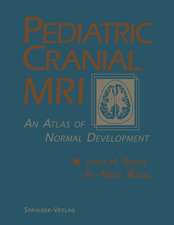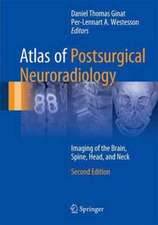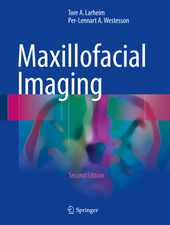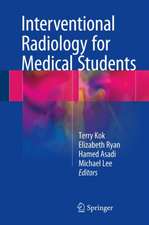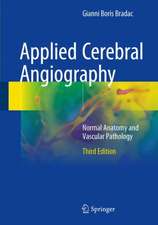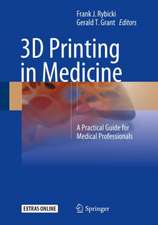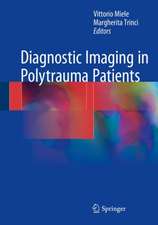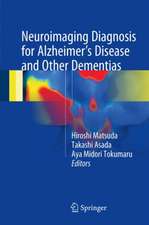Radiology in Forensic Medicine: From Identification to Post-mortem Imaging
Editat de Giuseppe Lo Re, Antonina Argo, Massimo Midiri, Cristina Cattaneoen Limba Engleză Hardback – 18 iul 2019
The book discusses the latest technologies applied in the forensic field, in particular computed tomography and magnetic resonance, which are continuously being updated. Radiological techniques are fundamental in rapidly providing a full description of the damage inflicted to add towitness and medical testimonies, and forensic/radiological anthropology supplies valuable evidence in cases of violence and abuse.
Written by international experts, it is of interest to students and residents in forensic medicine and radiology. It also presents a new approach to forensic investigation for lawyers and police special corps as well as law enforcement agencies.
Preț: 795.75 lei
Preț vechi: 837.64 lei
-5% Nou
Puncte Express: 1194
Preț estimativ în valută:
152.29€ • 158.40$ • 125.72£
152.29€ • 158.40$ • 125.72£
Carte tipărită la comandă
Livrare economică 11-17 aprilie
Preluare comenzi: 021 569.72.76
Specificații
ISBN-13: 9783319967363
ISBN-10: 3319967363
Pagini: 360
Ilustrații: XI, 301 p. 229 illus., 145 illus. in color.
Dimensiuni: 178 x 254 mm
Greutate: 0.74 kg
Ediția:1st ed. 2020
Editura: Springer International Publishing
Colecția Springer
Locul publicării:Cham, Switzerland
ISBN-10: 3319967363
Pagini: 360
Ilustrații: XI, 301 p. 229 illus., 145 illus. in color.
Dimensiuni: 178 x 254 mm
Greutate: 0.74 kg
Ediția:1st ed. 2020
Editura: Springer International Publishing
Colecția Springer
Locul publicării:Cham, Switzerland
Cuprins
A brief history of forensic radiology.- Strenghts and limits of conventional forensic medicine.- Medico-Legal aspects of forensic radiology.- Imaging techniques for forensic radiology in living.- Imaging techniques for postmortem forensic radiology.- Radiology in archeology: fundamentals and perspective.- Interpretation of diagnostic imaging for medico-legal issues.- Forensic Anthropology: Personal identification in living individuals.- Radiological age estimation: methods and applications.- Traffic accidents.- Violence and abuse part 1: battered child.- Violence and abuse part 2: domestic abuse.- Violence and abuse part 3: elderly abuse syndrome.- Penetrating and non penetrating trauma.- Imaging for ballistic trauma.- Body Packing.- Occupational Diseases.- Lie Detection Technology in the era of functional Magnetic Resonance Imaging.- Forensic Anthropology: post-mortem personal identification.- Conventional Radiology for post-mortem imaging.- Post-mortem Computed Tomography:from acquisition to reporting.- Post-mortem Magnetic Resonance: from acquisition to reporting.- Technical perspectives in post-mortem imaging.- Imaging for forensic thanatology.- Postmortem imaging in mass disasters.- Postmortem imaging in drowning.- Imaging in sudden unexpected natural deaths.- Foetal Postmortem imaging.- Brain imaging in post-mortem forensic radiology.- Pitfalls on Postmortem Imaging: the need of blending conventional and virtual autopsy.- Bioethical aspects on Postmortem Imaging.
Notă biografică
Giuseppe Lo Re is a radiologist and adjunct professor at the School of Specialization in Medical Imaging, Faculty of Medicine and Surgery, University of Palermo, Italy. After graduating in medicine and surgery in 2002, he completed his specialization in radiology in 2006, and in 2011 gained his PhD from the University of Palermo. His interests include forensic radiology, abdominal radiology and cardiac radiology. He is lead or co-author of 250 scientific publications, including 18 book chapters and 100 scientific articles in national and international journals.
Antonina Argo is full professor of forensic medicine at the University of Palermo, and Chief of Medico legal Unit. She has authored several papers and books and is a board member of the Egyptian Journal of Forensic Sciences.
Massimo Midiri is full professor of radiology and Director of the Section of Radiological Sciences, Department of Biopathology and Medical and Forensic Biotechnologies at the University Hospital “Paolo Giaccone” of Palermo, Italy, which hosts a leading school of surgical oncology. In recent years, Dr. Midiri has succeeded in establishing a new lab for preclinical studies at the Section of Radiological Sciences, with the installation of a very high magnetic field strength (7T) MRI scanner for small animals. The Section of Radiological Sciences also has the first and only Italian transcranial MRgFUS system for the treatment of neurological disorders. Dr. Midiri is lead author or co-author of more than 800 publications, including books and papers. His principal medical investigations relate to abdominal radiology, magnetic resonance, forensic radiology, neurological radiology and cardiac radiology.
Cristina Cattaneo is full professor of forensic medicine at the University of Milano.
She is the author of several books, chapters and about 150 papers, and is chief of the Laboratorio di Antropologia e Odontologia Forense (LABANOF), Milano.
Antonina Argo is full professor of forensic medicine at the University of Palermo, and Chief of Medico legal Unit. She has authored several papers and books and is a board member of the Egyptian Journal of Forensic Sciences.
Massimo Midiri is full professor of radiology and Director of the Section of Radiological Sciences, Department of Biopathology and Medical and Forensic Biotechnologies at the University Hospital “Paolo Giaccone” of Palermo, Italy, which hosts a leading school of surgical oncology. In recent years, Dr. Midiri has succeeded in establishing a new lab for preclinical studies at the Section of Radiological Sciences, with the installation of a very high magnetic field strength (7T) MRI scanner for small animals. The Section of Radiological Sciences also has the first and only Italian transcranial MRgFUS system for the treatment of neurological disorders. Dr. Midiri is lead author or co-author of more than 800 publications, including books and papers. His principal medical investigations relate to abdominal radiology, magnetic resonance, forensic radiology, neurological radiology and cardiac radiology.
Cristina Cattaneo is full professor of forensic medicine at the University of Milano.
She is the author of several books, chapters and about 150 papers, and is chief of the Laboratorio di Antropologia e Odontologia Forense (LABANOF), Milano.
Textul de pe ultima copertă
This book offers a comprehensive overview of the forensic and radiological aspects of pathological findings, focusing on the most relevant medico-legal issues, such as virtual autopsy (virtopsy), anthropometric identification, post-mortem decomposition features and the latest radiological applications used in forensic investigations. Forensic medicine and radiology are becoming increasingly relevant in the international medical and legal field as they offer essential techniques for determining cause of death and for anthropometric identification. This is highly topical in light of public safety and economic concerns arising as a result of mass migration and international tensions.
The book discusses the latest technologies applied in the forensic field, in particular computed tomography and magnetic resonance, which are continuously being updated. Radiological techniques are fundamental in rapidly providing a full description of the damage inflicted to add towitness and medical testimonies, and forensic/radiological anthropology supplies valuable evidence in cases of violence and abuse.
Written by international experts, it is of interest to students and residents in forensic medicine and radiology. It also presents a new approach to forensic investigation for lawyers and police special corps as well as law enforcement agencies.
The book discusses the latest technologies applied in the forensic field, in particular computed tomography and magnetic resonance, which are continuously being updated. Radiological techniques are fundamental in rapidly providing a full description of the damage inflicted to add towitness and medical testimonies, and forensic/radiological anthropology supplies valuable evidence in cases of violence and abuse.
Written by international experts, it is of interest to students and residents in forensic medicine and radiology. It also presents a new approach to forensic investigation for lawyers and police special corps as well as law enforcement agencies.
Caracteristici
Examines both radiological and forensic aspects in clinical practice Presents the latest technologies applied to the forensic field Useful for residents in forensic medicine and radiology, as well as for lawyers, investigative enforcement agencies and police special corps

